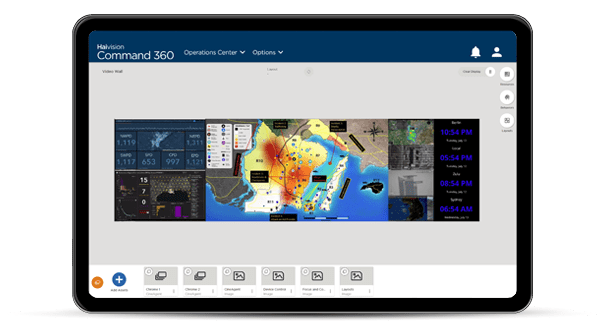A display wall, also known as a video wall, is comprised of several panels grouped, or tiled together to create a high-res single, dual, or multi-screen view in many different environments. While software and hardware work in tandem to connect and arrange content from multiple sources, the display wall acts as the method of delivery.
A large visual display of real-time information can help your organization make mission-critical decisions fast. But which display type works best?
Choosing a Display Type
Whether you are updating an existing system or building one from scratch, you need to choose a display wall setup that fits your organization’s needs and budget. While both LCD and LED displays are flat panel screens that exhibit a bright, high-definition picture, knowing the features and benefits, considerations, and typical use cases is key to making an informed decision. Let’s explore the two most popular options.
LCD
LCD panels (Liquid Crystal Displays) are composed of two polarized pieces of glass surrounding a layer of liquid crystals. Liquid crystals themselves aren’t light-emitting, so standard LCDs feature their own backlighting array that shines through the arrangement of liquid crystals to create the display’s picture.
Features/Benefits | Things to Consider | Typical Use Cases |
High resolution
Reliable
Serviceability
| Affordable
Bezel edges
Portable
|
|
LED
LED (Light Emitting Diode) or Direct View LED (DvLED) panels are similar to LCDs. However, unlike LCDs, LEDs use an array of light-emitting diodes as individual pixels across the entire display. Hundreds and hundreds of light-emitting diodes across the display are grouped in clusters of red, green, and blue which provide their own light while producing the required image.
Features/Benefits | Things to Consider | Typical Use Case |
Seamless view
Bright display
Reliable
| Higher cost
Very high ambient lighting
Aesthetics play a key role
LED controller
|
|
Neither option is uniformly better than the other, and your specific use case will be a major factor in what you ultimately choose. It’s important to partner with the right video wall solutions provider to help guide you down the right path.
Contact us today for a demo of our state-of-the-art products and more information on a customized video wall solution for your organization.
